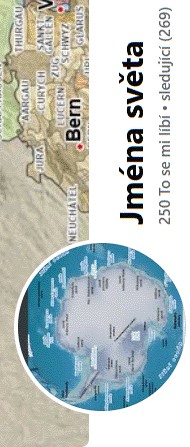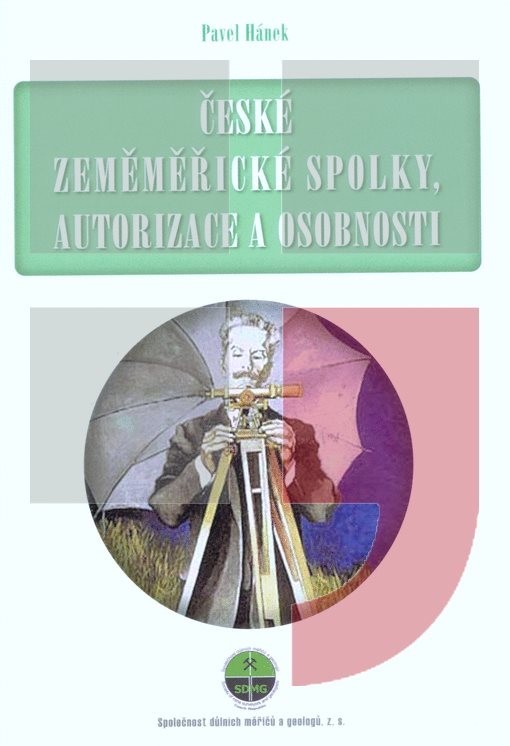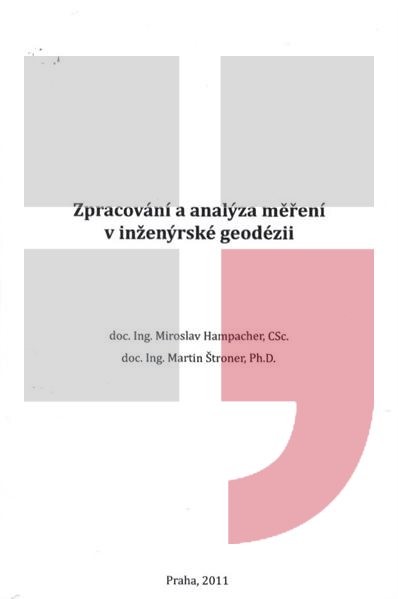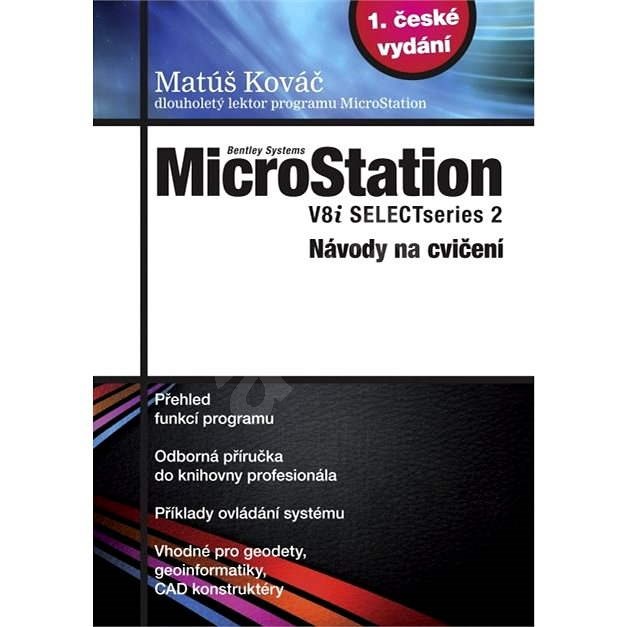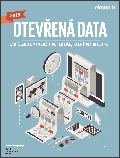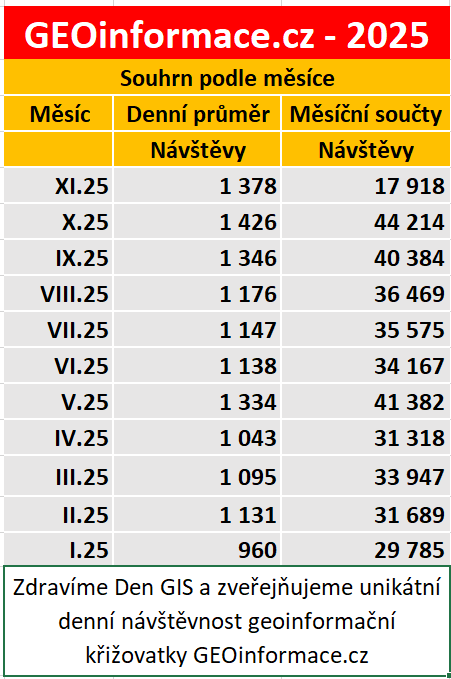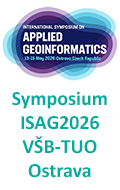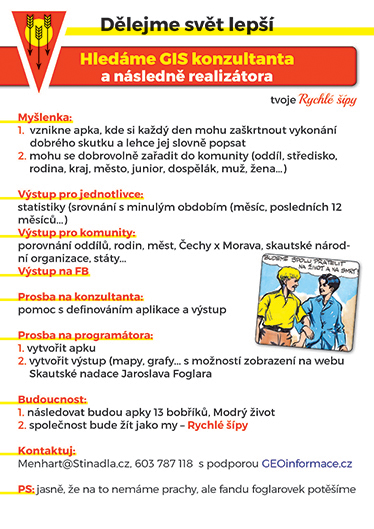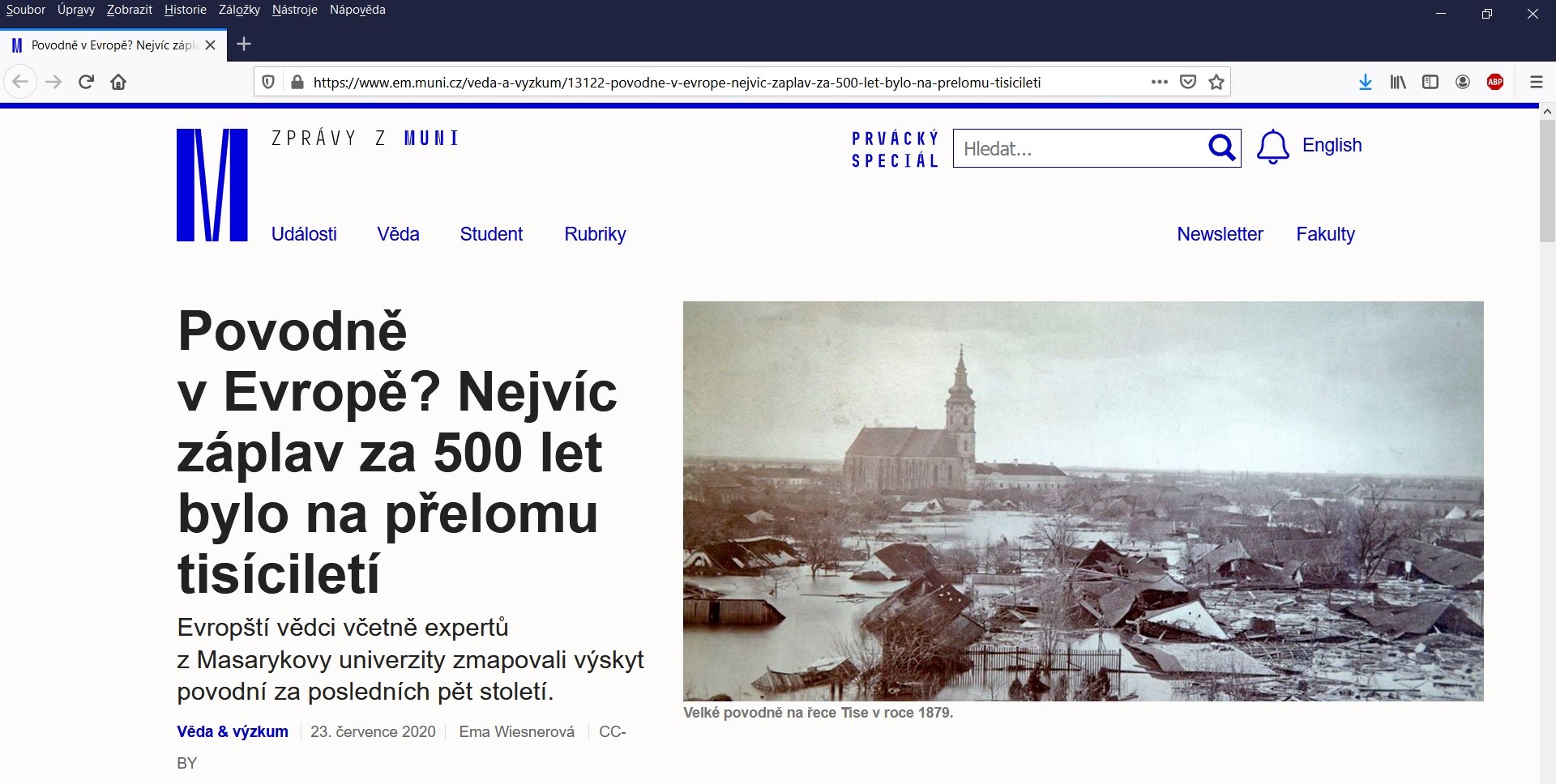zprávy
zdroje zpráv:Zveme vás na 5. ročník B
27.7.2020 11:57 Adeon![]() Zveme vás na 5. ročník BIM konference o BIMu prakticky a otevřeně.
Zveme vás na 5. ročník BIM konference o BIMu prakticky a otevřeně.
Oznámení o výběru zástupu na služební místo
27.7.2020 7:55 ČÚZK - předpisy a opatření Katastrální úřad pro Plzeňský kraj - Katastrální pracoviště Plzeň-jih zveřejnil novou aktualitu: Ředitelka Katastrálního úřadu pro Plzeňský kraj oznamuje, že obsazuje služební místo Rada/odborný rada – rozhodování o povolení vkladu – RPV0902 v oddělení právních vztahů k nemovitostem na katastrálním pracovišti Plzeň-jih.Oznámení o výběru zástupu na služební místo
27.7.2020 7:55 ČÚZK /Urady/Katastralni-urady/Katastralni-urady/Katastralni-urad-pro-Plzensky-kraj/O-uradu/Aktuality/Oznameni-o-vyberu-zastupu-na-sluzebni-mistoOznámení o výběru zástupu na služební místo
27.7.2020 7:49 ČÚZK /Urady/Katastralni-urady/Katastralni-urady/Katastralni-urad-pro-Plzensky-kraj/Volna-mista/DMS/Oznameni-o-vyberu-zastupu-na-sluzebni-mistoOznámení o výběru zástupu na služební místo
27.7.2020 7:49 ČÚZK - předpisy a opatření Katastrální úřad pro Plzeňský kraj Katastrální pracoviště Plzeň-jihvypisuje výběrové řízení na místo
Oznámení o výběru zástupu na služební místo
Oznámení o výběru zástupu na služební místo
27.7.2020 7:49 ČÚZK - volná místa Katastrální úřad pro Plzeňský kraj Katastrální pracoviště Plzeň-jih vypisuje výběrové řízení na místo Oznámení o výběru zástupu na služební místoHexagon Interim Report 1 January - 30 June 2020
24.7.2020 17:56 GISCafe.com Webcasts-Webinars NACKA STRAND, Sweden, July 24, 2020 — (PRNewswire) — Second quarter 2020Net sales decreased by -8 per cent to 896.6 MEUR (976.0). Using …
1Spatial announce the release of 1Data Gateway v2.1
24.7.2020 17:56 GISCafe.com Webcasts-Webinars Cambridge, UK, 24th July 2020, (www.1spatial.com) 1Spatial, a global leader in Location Master Data Management (LMDM) software and …Velodyne Lidar and PARIFEX Solutions Provide Smart Traffic Control
24.7.2020 17:56 GISCafe.com Webcasts-Webinars Velodyne Announces a Three Year Sales Agreement to Improve Roadway SafetySAN JOSE, Calif. — (BUSINESS WIRE) — July 24, 2020 …
Cloud-based data storage key to successful remote working
24.7.2020 17:23 Bentley SystemsPress Coverage
New Civil Engineer, UK
Read the articleInsolvency and data: Severing the Golden Thread
24.7.2020 17:20 Bentley SystemsPress Coverage
BIM Today, UK
Read the articlei3P & Bentley: From Brewdog to BAM – We are all in this together
24.7.2020 17:17 Bentley SystemsPress Coverage
i3P, UK
Read the articleBentley Systems offers free access to ProjectWise 365
24.7.2020 17:12 Bentley SystemsPress Coverage
AEC Magazine, UK
Read the articleBentley Systems enables work from home infrastructure projects
24.7.2020 16:58 Bentley SystemsPress Coverage
PBC Today, UK
Read the articleBentley Systems makes cloud service free for those working from home
24.7.2020 16:50 Bentley SystemsPress Coverage
New Civil Engineer, UK
Read the articleBentley Systems opens up access, waives subscription fees through Sept. 30
24.7.2020 16:47 Bentley SystemsPress Coverage
WaterWorld, USA
Read the articleBentley waives fees to support home workers
24.7.2020 16:41 Bentley SystemsPress Coverage
The Construction Index, UK
Read the article20200724-Statistické údaje za 2. čtvrtletí 2020
24.7.2020 11:32 ČÚZK /Aktuality-resort/2020/20200724-Statisticke-udaje-za-2-ctvrtleti-202020200724-Statistické údaje za 2. čtvrtletí 2020
24.7.2020 11:32 ČÚZK - předpisy a opatření Český úřad zeměměřický a katastrální zveřejnil novou aktualitu: Zveřejněny statistické údaje za 2. čtvrtletí roku 2020 o vybraných transakcích s nemovitostmi evidovanými v KN.ČÚZK – krátkodobé přerušení provozu DP a WSDP
24.7.2020 11:12 GEPROČÚZK plánuje přerušit provoz Dálkového přístupu (DP) a Webových služeb dálkového přístupu (WSDP) ve čtvrtek 30.… >>
Falkland Islands
24.7.2020 10:00 ESA Observing the Earth Image:
The Falkland Islands are featured in this radar image captured by the Copernicus Sentinel-1 mission.
Image:
The Falkland Islands are featured in this radar image captured by the Copernicus Sentinel-1 mission.
Earth from Space: Falkland Islands
24.7.2020 10:00 ESA Observing the Earth Video:
00:02:50
Video:
00:02:50
This week's edition of the Earth from Space programme features a radar image of the Falkland Islands, captured by the Copernicus Sentinel-1 mission.
See also Falkland Islands to download the image.
Maxar Technologies Second Quarter 2020 Investor Call Scheduled for Wednesday, August 5, 2020
24.7.2020 9:00 GISCafe.com Webcasts-Webinars WESTMINSTER, Colo. — (BUSINESS WIRE) — July 23, 2020 — Maxar Technologies (NYSE:MAXR) (TSX:MAXR), a trusted partner and innovator …Seequent accelerates cloud solutions to help keep world at work on major projects
24.7.2020 9:00 GISCafe.com Webcasts-Webinars CHRISTCHURCH, NZ, 21 July 2020 - High-growth geoscience software company Seequent is accelerating the development of its cloud-based solution …Přerušení provozu DP a WSDP ve čtvrtek 30.07.2020 od 15:30 až do pátku 31.07.2020 do cca 01:00.
24.7.2020 8:48 Dálkový přístup k údajům KN ČR Vážení uživatelé,oznamujeme, že ve čtvrtek 30.07.2020 od 15:30 bude z provozních důvodů zcela přerušen provoz Dálkového přístupu i Webových služeb dálkového přístupu. Obnovení provozu předpokládáme v pátek 31.07.2020 v cca 01:00 hodin.
Za komplikace tímto způsobené se omlouváme a děkujeme za pochopení.
Přerušení provozu DP a WSDP ve čtvrtek 30.07.2020 od 15:30 až do pátku 31.07.2020 do cca 01:00.
24.7.2020 8:48 ČÚZK - předpisy a opatření Vážení uživatelé,oznamujeme, že ve čtvrtek 30.07.2020 od 15:30 bude z provozních důvodů zcela přerušen provoz Dálkového přístupu i Webových služeb dálkového přístupu. Obnovení provozu předpokládáme v pátek 31.07.2020 v cca 01:00 hodin.
Za komplikace tímto způsobené se omlouváme a děkujeme za pochopení.
Přerušení provozu DP a WSDP ve čtvrtek 30.07.2020 od 15:30 až do pátku 31.07.2020 do cca 01:00.
24.7.2020 8:48 ČÚZK /Aplikace-DP-do-KN/Aplikace-DP-do-KN/Archiv-DP/295722Bentley Systems virtually connects construction
24.7.2020 2:00 Bentley SystemsPress Coverage
International Construction, UK
Read the articleINSPIRE téma Adresy (AD)
24.7.2020 2:00 Cenia - Katalog metadat ČR - INSPIRE Data odpovídají směrnici INSPIRE pro téma adresy (AD). Vychází především z projektu RÚIAN (Registr územní identifikace, adres a nemovitostí), který je součástí základních registrů České Republiky a obsahuje informace o územní identifikaci, adresách a nemovitostech. Data publikovaná v rámci INSPIRE obsahují pouze adresní místa a jejich komponenty, kterými jsou stát, obec, část obce, městský obvod v Praze (MOP), městký obvod/městská část (MO/MČ), ulice a pošta a to na území celé České Republiky. Obsahují rozvněž geometrii, která určuje definiční bod adresního místa. V datové sadě nění uvedeno 1,12%, t.j. 32984 adresních míst (k 20. 07. 2020), protože neobsahují definiční bod, podle kterého by je bylo možné prostorově určit. Více v zákoně č. 111/2009 Sb., o základních registrech a ve vyhlášce č. 359/2011 Sb., o základním registru územní identifikace, adres a nemovitostí v platných zněních a INSPIRE Data Specification on Addresses v 3.0.1 z 26.4.2010. Data ve formátu GML 3.2.1 jsou validní proti schématu XML pro INSPIRE téma Adresy ve verzi 4.0 a proti schématu pro prostorová data ELF ve verzi 1.0.INSPIRE téma Rozšířené Parcely (CPX)
24.7.2020 2:00 Cenia - Katalog metadat ČR - INSPIRE Rozšíření má za cíl poskytovat katastrální mapu s obsahem podle vyhlášky ve vektorové podobě ve struktuře plně v souladu se strukturou danou směrnicí INSPIRE. Data rozšiřují směrnici INSPIRE pro téma katastrální parcely (CP) o věcná břemena, geodetické body, další prvky mapy, původní obloukovou geometrii a o parcely určené definičním bodem (ty pouze v oblastech s analogovou mapou). Vychází z katastrální mapy, která je závazným státním mapovým dílem velkého měřítka, obsahuje body polohového bodového pole, polohopis a popis a může mít formu digitální mapy, analogové mapy nebo digitalizované mapy. Publikovaná data obsahují katastrální území pro celou Českou Republiku, parcely a jejich hranice, věcná břemena, další prvky mapy a původní obloukovou geometrii z území, kde je digitální mapa (k 20. 07. 2020 je to 96,85% území České republiky, t.j. 76 381,41km2) a ve zbytku území katastrální parcely určené pouze definičním bodem (tedy bez hranic a polygonu). Katastrální parcely a hranice obsahují oproti datové sadě INSPIRE některé atributy navíc. Jedná se o typ hranice, způsob využití území, druh pozemku, vazbu na budovu a o mapové značky. Více katastrální zákon 344/1992 SB., katastrální vyhláška č.26/2007 Sb. v platném znění a INSPIRE Data Specification on Cadastral Parcels v 3.0.1. Data ve formátu GML 3.2.1 jsou validní proti schématu XML pro Rozšířené Parcely (CPX) ve verzi 4.0.Katastrální mapa v rastrové podobě poskytovaná v e-shopu
24.7.2020 2:00 Cenia - Katalog metadat ČR - INSPIRE Katastrální mapa v rastrové podobě je poskytována za úplatu a obsahuje analogovou mapu s kompletní kresbou. Analogová mapa pokrývá 2,96 % území České republiky, což je 2 338,16km2. Více katastrální vyhláška č.357/2013 Sb. v platném znění.INSPIRE téma Parcely (CP)
24.7.2020 2:00 Cenia - Katalog metadat ČR - INSPIRE Data odpovídají směrnici INSPIRE pro téma katastrální parcely (CP). Vychází z katastrální mapy, která je závazným státním mapovým dílem velkého měřítka, obsahuje body polohového bodového pole, polohopis a popis a může mít formu digitální mapy, analogové mapy nebo digitalizované mapy. Data publikovaná v rámci INSPIRE obsahují pouze katastrální území (pro celou Českou Republiku) a parcely a jejich hranice z území, kde je digitální mapa (k 20. 07. 2020 je to 96,85% území České republiky, t.j. 76 381,41km2). Více katastrální zákon 344/1992 SB., katastrální vyhláška č.26/2007 Sb. v platném znění a INSPIRE Data Specification on Cadastral Parcels v 3.0.1. Data ve formátu GML 3.2.1 jsou validní proti schématu XML pro INSPIRE téma Parcely ve verzi 4.0 a proti schématu pro prostorová data ELF ve verzi 1.0.INSPIRE téma Budovy (BU)
24.7.2020 2:00 Cenia - Katalog metadat ČR - INSPIRE Data odpovídají směrnici INSPIRE pro téma budovy (BU). Data pochází částečně z projektu RÚIAN (Registr územní identifikace, adres a nemovitostí), který je součástí základních registrů České Republiky a obsahuje informace o územní identifikaci, adresách a nemovitostech, a částečně z ISKN (Informační systém katastru nemovistostí). Zdrojem informací o budovách v ISKN je objekt Stavba, v RÚIAN je to Stavební objekt. Většina Staveb je zároveň Stavebními objekty, ale jsou případy, kdy tomu tak není. Kromě Budov datová sada obsahuje i části budov, které jsou pro potřeby INSPIRE vyjádřeny vchody z RÚIAN. Vchody obsahují informace o počtu podlaží, technickoekonomických atributech apod. Datová sada pokrývá celé území české republiky. V datové sadě není uvedeno 1,14%, t.j. 48206 budov (k 20. 07. 2020), protože neobsahují definiční bod ani polygon. Více v zákoně č. 111/2009 Sb., o základních registrech, ve vyhlášce č. 359/2011 Sb., o základním registru územní identifikace, adres a nemovitostí v platných zněních, v zákoně 256/2013 Sb., o katastru nemovitostí, v katastrální vyhlášce č. 357/2013 Sb. v platném znění a INSPIRE Data Specification on Buildings v 3.0 z 13.12.2013. Data ve formátu GML 3.2.1 jsou validní proti schématu XML pro INSPIRE téma Budovy ve verzi 4.0 a proti schématu pro prostorová data ELF ve verzi 1.0.Katastrální mapa ve formátech DGN a DXF poskytovaná v e-shopu
24.7.2020 2:00 Cenia - Katalog metadat ČR - INSPIRE Katastrální mapa je závazným státním mapovým dílem velkého měřítka, obsahuje body polohového bodového pole, polohopis a popis. Katastrální mapa ve vektorové podobě je poskytována zdarma ve formátu DGN a DXF a obsahuje prvky Digitální katastrální mapy (DKM) a Katastrální mapy digitalizované (KMD), tedy bodová pole, budovy, další prvky mapy, hranice parcel, katastrální hranice, parcely katastru nemovitostí, prvky orientační mapy a hranice věcného břemene. Z důvodu použití formátu DGN produkt neobsahuje značky na liniích a oblouky jsou nahrazeny lomenými čárami. Katastrální mapa ve vektorové podobě k 20. 07. 2020 pokrývá 96,85% území České republiky, t.j. 76 381,41km2. Více katastrální vyhláška č.357/2013 Sb. v platném znění.Carlson Announces Next-Generation BRx7 GNSS Receiver
23.7.2020 22:10 Carlson Software Maysville, Ky., U.S.A. (July 23, 2020) – Today Carlson Software announced its next-generation multi-frequency, multi-GNSS BRx7 smart antenna. The completely new BRx7 is a full redesign of Carlson’s flagship GNSS receiver, delivering class-leading specifications, performance, and value for surveyors, contractors, engineers, GIS professionals, and anyone else requiring the best in GNSS technology, reliability, and Carlson’s […]Carlson Announces Next-Generation BRx7 GNSS Receiver
23.7.2020 22:10 Carlson Software Maysville, Ky., U.S.A. (July 27, 2020) – Today Carlson Software announced its next-generation multi-frequency, multi-GNSS BRx7 smart antenna. The completely new BRx7 is a full redesign of Carlson’s flagship GNSS receiver, delivering class-leading specifications, performance, and value for surveyors, contractors, engineers, GIS professionals, and anyone else requiring the best in GNSS technology, reliability, and Carlson’s […]A Visit to the AI International Hub of China, reveals how the "magical" institutes are changing people's lives
23.7.2020 16:20 GISCafe.com Webcasts-Webinars CHENGDU, China, July 22, 2020 — (PRNewswire) — Human faces with a mask can be recognized; a system automatically captures and locates …CoreLogic Delivers Strong Second Quarter Revenue and Profit Growth and Record Free Cash Flow; Raises Full-year 2020 Financial Guidance
23.7.2020 16:20 GISCafe.com Webcasts-Webinars Commits to $1 Billion Share Repurchase by End of 2022, Including at Least $500 Million in 2020;Increases Quarterly Dividend by 50%;
Will Exit …
Airial Robotics sets out to change global commercial drone market with a new type of UAV
23.7.2020 16:20 GISCafe.com Webcasts-Webinars HAMBURG, Germany, July 23, 2020 — (PRNewswire) — The company Airial Robotics, head-quartered in Hamburg, Germany, and with …Kespry's Drone-Based Aerial Intelligence Platform Helps The Shelly Company Increase Mine Planning and Inventory Management Accuracy
23.7.2020 16:20 GISCafe.com Webcasts-Webinars Ohio's largest aggregates provider also enhances employee safety and achieves significant cost savings with KespryMENLO PARK, Calif., July 23, 2020 …
Interview with Drew Fioranelli, Public Safety GIS Expert, DATAMARK
23.7.2020 16:20 GISCafe.com Webcasts-WebinarsWSGP
23.7.2020 15:36 ČÚZK - předpisy a opatření Český úřad zeměměřický a katastrální zveřejnil novou aktualitu: V souvislosti s instalací ISKN v.9.0.2 budou ke dni 31.7.2020 provedeny i úpravy ve službě WSGP. Více informací naleznete na stránce Webová služba pro vyhotovitele a ověřovatele geometrických plánů (WSGP).WSGP
23.7.2020 15:36 ČÚZK - RSS kanál pro zeměměřiče V souvislosti s instalací ISKN v.9.0.2 budou ke dni 31.7.2020 provedeny i úpravy ve službě WSGP. Více informací naleznete na stránce Webová služba pro vyhotovitele a ověřovatele geometrických plánů (WSGP)WSGP
23.7.2020 15:36 ČÚZK - předpisy a opatření Český úřad zeměměřický a katastrální zveřejnil novou aktualitu: V souvislosti s instalací ISKN v.9.0.2 budou ke dni 31.7.2020 provedeny i úpravy ve službě WSGP. Více informací naleznete na stránce Webová služba pro vyhotovitele a ověřovatele geometrických plánů (WSGP)WSGP
23.7.2020 15:36 ČÚZK - RSS kanál pro zeměměřiče V souvislosti s instalací ISKN v.9.0.2 budou ke dni 31.7.2020 provedeny i úpravy ve službě WSGP. Více informací naleznete na stránce Webová služba pro vyhotovitele a ověřovatele geometrických plánů (WSGP).WSGP
23.7.2020 15:36 ČÚZK - RSS kanál pro zeměměřiče V souvislosti s instalací ISKN v.9.0.2 budou ke dni 31.7.2020 provedeny i úpravy ve službě WSGP. Více informací na stránce Webová služba pro vyhotovitele a ověřovatele geometrických plánů (WSGP).WSGP
23.7.2020 15:30 ČÚZK - předpisy a opatření Český úřad zeměměřický a katastrální zveřejnil novou aktualitu: V souvislosti s instalací ISKN v.9.0.2 budou ke dni 31.7.2020 provedeny i úpravy ve službě WSGP. Více informací naleznete na stránce Webová služba pro vyhotovitele a ověřovatele geometrických plánů (WSGP).EGNOS procedures implemented in Vilnius
23.7.2020 11:00 European GNSS Agency
EGNOS procedures were launched at Vilnius Airport in Lithuania on 18 June 2020 as part of the EGNOS Lithuania project. Funded under the European GNSS Agency’s (GSA) Aviation Grant Programme, EGNOS Lithuania aims to implement 5 LPV approach procedures at the three biggest airports in Lithuania: Vilnius, Kaunas and Palanga.
The launch at Vilnius Airport is the very first EGNOS implementation in Lithuania, and the procedures at Kaunas and Palanga have already been designed and are expected to be operational by the end of the year. EGNOS implementation at the airports is expected to reduce the airports’ spending on navigation infrastructure and increase safety and operational efficiency.
Growing number of airports
“I am happy to announce, that since June 2020, the EGNOS-enabled RNP precision approach procedure LPV is operational at Vilnius International Airport. We thank the European GNSS Agency for supporting the EGNOS Lithuania project and look forward to seeing LPV-equipped aircraft using the benefits of LPV application at Vilnius Airport,” said Lithuanian Deputy Minister for Transport and Communications Gytis Mažeika, adding: “Kaunas and Palanga airports will appear on the EGNOS operational map by January 2021 at the latest.”
Read this: EGNOS goes from strength to strength
The launch followed a period of close cooperation between the GSA and the Lithuanian stakeholders within the context of the EGNOS Lithuania project. “The first implementation of EGNOS procedures in Lithuania is a major success, both for the EGNOS programme and for the aviation community in the country. Vilnius has joined, and Kaunas and Palanga will soon join, the growing number of airports across Europe where EGNOS helps planes and helicopters land safely,” said GSA Acting Executive Director Pascal Claudel. “We hope that this successful launch will stimulate the operational use of EGNOS in Lithuania and generate interest in EGNOS among operators and airspace users throughout the Baltic region,” he said.
The EGNOS Lithuania project is run by ORO Navigacija, the Lithuanian Air Navigation Service Provider (ANSP). “Oro Navigacija is proud to make an important step towards implementation of Commission Implementing Regulation 2018/1048 and appear on the EGNOS operational map. EGNOS-based RNP Approach SBAS (LPV) procedures are already valid in Vilnius International Airport, while two other TEN-T international airports – Kaunas (KUN) and Palanga (PLQ) shall still make the respective validations,” said Oro Navigacija Acting Director Marius Beliūnas.
“Introduction of LPV contributes to strengthening flight safety and enabling efficiency improvements, as many aircrafts flying to Lithuania have already been EGNOS equipped, or operators plan to do so in the nearest future,” he said.
A powerful tool
EGNOS is the European Geostationary Navigation Overlay Service, a Space-Based Augmentation System (SBAS). It is a powerful tool for airports facing increasing congestion, and flight delays and diversions due to bad weather. As of the end of June 2020, 708 EGNOS-based procedures have been implemented at 367 airports and helipads in the EU.
EGNOS augments signals from navigation satellites, including Galileo, to deliver enhanced vertical and horizontal precision, without the need for costly ground infrastructure. EGNOS makes airports more accessible, increasing air transport capacity and safety. It even benefits people on the ground, by enabling more optimised flight plans that reduce emissions and external noise levels.
And this: JOHAN V5 leverages EGNOS for extra precision
The GSA set up its Aviation Grants Programme in 2014 to promote EGNOS operational implementation in aviation. So far, 44 projects have been awarded total investment of EUR 22 million. Thanks to the Aviation Grants Programme more than 150 aircraft will be operating with EGNOS in Europe and more than 130 EGNOS approach procedures have been designed at several European airports, increasing the safety and accessibility in the aviation sector.
The GSA is planning to launch another Call for Proposals in 2020 to foster EGNOS adoption in the European aviation, for more information see the EGNOS Grant Plan 2020.
Media note: This feature can be republished without charge provided the European GNSS Agency (GSA) is acknowledged as the source at the top or the bottom of the story. You must request permission before you use any of the photographs on the site. If you republish, we would be grateful if you could link back to the GSA website (http://www.gsa.europa.eu).
EGNOS procedures implemented in Vilnius
23.7.2020 11:00 European GNSS Agency
EGNOS procedures were launched at Vilnius Airport in Lithuania on 18 June 2020 as part of the EGNOS Lithuania project. Funded under the European GNSS Agency’s (GSA) Aviation Grant Programme, EGNOS Lithuania aims to implement 5 LPV approach procedures at the three biggest airports in Lithuania: Vilnius, Kaunas and Palanga.
The launch at Vilnius Airport is the very first EGNOS implementation in Lithuania, and the procedures at Kaunas and Palanga have already been designed and are expected to be operational by the end of the year. EGNOS implementation at the airports is expected to reduce the airports’ spending on navigation infrastructure and increase safety and operational efficiency.
Growing number of airports
“I am happy to announce, that since June 2020, the EGNOS-enabled RNP precision approach procedure LPV is operational at Vilnius International Airport. We thank the European GNSS Agency for supporting the EGNOS Lithuania project and look forward to seeing LPV-equipped aircraft using the benefits of LPV application at Vilnius Airport,” said Lithuanian Deputy Minister for Transport and Communications Gytis Mažeika, adding: “Kaunas and Palanga airports will appear on the EGNOS operational map by January 2021 at the latest.”
Read this: EGNOS goes from strength to strength
The launch followed a period of close cooperation between the GSA and the Lithuanian stakeholders within the context of the EGNOS Lithuania project. “The first implementation of EGNOS procedures in Lithuania is a major success, both for the EGNOS programme and for the aviation community in the country. Vilnius has joined, and Kaunas and Palanga will soon join, the growing number of airports across Europe where EGNOS helps planes and helicopters land safely,” said GSA Acting Executive Director Pascal Claudel. “We hope that this successful launch will stimulate the operational use of EGNOS in Lithuania and generate interest in EGNOS among operators and airspace users throughout the Baltic region,” he said.
The EGNOS Lithuania project is run by ORO Navigacija, the Lithuanian Air Navigation Service Provider (ANSP). “Oro Navigacija is proud to make an important step towards implementation of Commission Implementing Regulation 2018/1048 and appear on the EGNOS operational map. EGNOS-based RNP Approach SBAS (LPV) procedures are already valid in Vilnius International Airport, while two other TEN-T international airports – Kaunas (KUN) and Palanga (PLQ) shall still make the respective validations,” said Oro Navigacija Acting Director Marius Beliūnas.
“Introduction of LPV contributes to strengthening flight safety and enabling efficiency improvements, as many aircrafts flying to Lithuania have already been EGNOS equipped, or operators plan to do so in the nearest future,” he said.
A powerful tool
EGNOS is the European Geostationary Navigation Overlay Service, a Space-Based Augmentation System (SBAS). It is a powerful tool for airports facing increasing congestion, and flight delays and diversions due to bad weather. As of the end of June 2020, 708 EGNOS-based procedures have been implemented at 367 airports and helipads in the EU.
EGNOS augments signals from navigation satellites to deliver enhanced vertical and horizontal precision, without the need for costly ground infrastructure. EGNOS makes airports more accessible, increasing air transport capacity and safety. It even benefits people on the ground, by enabling more optimised flight plans that reduce emissions and external noise levels.
And this: JOHAN V5 leverages EGNOS for extra precision
The GSA set up its Aviation Grants Programme in 2014 to promote EGNOS operational implementation in aviation. So far, 44 projects have been awarded total investment of EUR 22 million. Thanks to the Aviation Grants Programme more than 150 aircraft will be operating with EGNOS in Europe and more than 130 EGNOS approach procedures have been designed at several European airports, increasing the safety and accessibility in the aviation sector.
The GSA is planning to launch another Call for Proposals in 2020 to foster EGNOS adoption in the European aviation, for more information see the EGNOS Grant Plan 2020.
Media note: This feature can be republished without charge provided the European GNSS Agency (GSA) is acknowledged as the source at the top or the bottom of the story. You must request permission before you use any of the photographs on the site. If you republish, we would be grateful if you could link back to the GSA website (http://www.gsa.europa.eu).
Nabídka volného pracovního místa
23.7.2020 10:35 ČÚZK /Urady/Katastralni-urady/Katastralni-urady/Katastralni-urad-pro-Ustecky-kraj/O-uradu/Aktuality/Nabidka-volneho-pracovniho-mista20200717 - volné místo - Ředitel/ředitelka technického odboru na Katastrálním úřadu pro Ústecký kraj
23.7.2020 10:35 ČÚZK - předpisy a opatření Katastrální úřad pro Ústecký kraj zveřejnil novou aktualitu: Ředitel / ředitelka technického odboru na Katastrálním úřadu pro Ústecký kraj Nabídka volného pracovního místa - Ředitel / ředitelka technického odboru na Katastrálním úřadu pro Ústecký kraj20200717 - volné místo - Ředitel/ředitelka technického odboru na Katastrálním úřadu pro Ústecký kraj
23.7.2020 10:35 ČÚZK /Urady/Katastralni-urady/Katastralni-urady/Katastralni-urad-pro-Ustecky-kraj/O-uradu/Aktuality/Nabidka-volneho-pracovniho-mistaNabídka volného pracovního místa
23.7.2020 10:35 ČÚZK - předpisy a opatření Katastrální úřad pro Ústecký kraj zveřejnil novou aktualitu: Ředitel / ředitelka technického odboru na Katastrálním úřadu pro Ústecký kraj Nabídka volného pracovního místa - Ředitel / ředitelka technického odboru na Katastrálním úřadu pro Ústecký krajZveřejnění obsahu informací poskytnutých na žádost dle zákona č. 106/1999 Sb. za rok 2020
23.7.2020 10:13 ČÚZK /Urady/Katastralni-urady/Katastralni-urady/Katastralni-urad-pro-Ustecky-kraj/Casto-hledane-informace/Poskytovani-informaci-106-1999-Sb/Zverejneni-obsahu-informaci-poskytnutych-na-za-(1)/Zverejneni-obsahu-informaci-poskytnutych-na-za-(2)Zveřejnění obsahu informací poskytnutých na žádost dle zákona č. 106/1999 Sb. za rok 20
23.7.2020 10:13 ČÚZK /Urady/Katastralni-urady/Katastralni-urady/Katastralni-urad-pro-Ustecky-kraj/Casto-hledane-informace/Poskytovani-informaci-106-1999-Sb/Zverejneni-obsahu-informaci-poskytnutych-na-za-(1)/Zverejneni-obsahu-informaci-poskytnutych-na-za-(2)Zveřejnění obsahu informací poskytnutých na žádost dle zákona č. 106/1999 Sb. za rok 20
23.7.2020 10:13 ČÚZK - předpisy a opatření Katastrální úřad pro Ústecký krajzveřejňuje obsah informace poskytnutých na žádost dle zákona č. 106/1999 Sb. za rok
2020
Zveřejnění obsahu informací poskytnutých na žádost dle zákona č. 106/1999 Sb. za rok 2020
23.7.2020 10:13 ČÚZK - předpisy a opatření Katastrální úřad pro Ústecký krajzveřejňuje obsah informace poskytnutých na žádost dle zákona č. 106/1999 Sb. za rok
2020
Mapping the Oaxaca earthquake from space
23.7.2020 9:30 ESA Observing the Earth
On the morning of 23 June 2020, a strong earthquake struck the southern state of Oaxaca, Mexico. The 7.4- magnitude earthquake prompted evacuations in the region, triggered a tsunami warning and damaged thousands of houses. Satellite radar data, from the Copernicus Sentinel-1 mission, are being used to analyse the effects of the earthquake on land.
První firma z jižní Moravy úspěšně dokončila inkubaci v programu Evropské kosmické agentury (TZ)
23.7.2020 8:52 GISportal.cz
V roce 2008 se spolu se svými dvěma přáteli rozhodl Petr Přidal založit startup, který by firmám nabízel mapy šité na míru. Dnes používá mapy MapTiler od firmy OctoGeo každý měsíc podle jeho slov přes dvě stě milionů lidí na celém světě. Úspěšný startup získal v roce 2018 i „vesmírného oscara“ Copernicus Masters, což mu otevřelo dveře […]
The post První firma z jižní Moravy úspěšně dokončila inkubaci v programu Evropské kosmické agentury (TZ) appeared first on GISportal.cz.
Evropští vědci včetně prof. Brázdila publikovali studii o povodních v prestižním časopise Nature
23.7.2020 0:00 Geografický ústav MUCavity Scanning: A Careful Look at New Technology vs. Improved Technology
22.7.2020 22:47 Carlson Software Cavity Scanning, or as most of our users like to say “C-ALS® Survey” is something that has been conducted for decades under our product line. It isn’t new to us (and those in underground mining operations) but it is capturing the attention of many new potential users of the data. In any operation where production […]Drill and Blast Consultant, Sally Zadra, Becomes Carlson Machine Control Dealer
22.7.2020 22:05 Carlson Software MAYSVILLE, Ky., U.S.A. (July 21, 2020) — Carlson Machine Control has partnered with Sally Zadra as an official dealer and reseller. With over thirty years of experience working in the mining and quarries industry across North America, Sally Zadra has routinely collaborated with Carlson staff and utilized Carlson Software solutions. The partnership between Carlson Machine […]Drill and Blast Consultant, Sally Zadra, Becomes Carlson Machine Control Dealer
22.7.2020 22:05 Carlson Software MAYSVILLE, Ky., U.S.A. (July 21, 2020) — Carlson Machine Control has partnered with Sally Zadra as an official dealer and reseller. With over fifteen years of experience working in the mining and quarries industry across North America, Sally Zadra has routinely collaborated with Carlson staff and utilized Carlson Software solutions. The partnership between Carlson Machine […]Pitney Bowes Names Gregg Zegras Executive Vice President and President, Global Ecommerce
22.7.2020 19:27 GISCafe.com Webcasts-Webinars Former Chief Commercial Officer Has Helped Pitney Bowes Add $1 Billion in Revenue in Six YearsSTAMFORD, Conn. — (BUSINESS WIRE) — July …
Swift Navigation and Savari Partner to Bring Precise Positioning Services to V2X Applications for Automotive OEMs and Mobile Operators
22.7.2020 19:27 GISCafe.com Webcasts-Webinars SAN FRANCISCO and SANTA CLARA, Calif., July 22, 2020 (GLOBE NEWSWIRE) -- Savari, Inc., a Silicon Valley-based auto tech company and pioneer of …Cepton Continues Global Expansion With Appointments of Key Lidar Industry Veterans
22.7.2020 17:43 GISCafe.com Webcasts-Webinars Growing Japan and Asia presence builds on previously announced partnership with KoitoSAN JOSE, Calif. — (BUSINESS WIRE) — July 22, 2020 …
First Responder Technologies and Falcon Eye Drones Sign an Exclusive Distribution Agreement for UAE and Wider GCC
22.7.2020 16:50 GISCafe.com Webcasts-Webinars VANCOUVER, BC, July 22, 2020 — (PRNewswire) —VANCOUVER, BC, July 22, 2020 /CNW/ - First Responder Technologies Inc. ("First …
Inpixon Launches New Website Highlighting Comprehensive Indoor Intelligence Platform with Mapping, Positioning, Security and Analytics
22.7.2020 16:50 GISCafe.com Webcasts-Webinars PALO ALTO, Calif. and TORONTO, July 22, 2020 — (PRNewswire) — Inpixon (Nasdaq: INPX), a leading indoor data company that delivers …Mapová aplikace ÚPD - nové dokumentace
22.7.2020 15:40 Jihočeský kraj V mapové aplikaci Územně plánovací dokumentace obcí byla aktualizována územně plánovací dokumentace obcí ORP Jindřichův Hradec – Kunžak; ORP České Budějovice – Dasný, Chotýčany; ORP Soběslav – Veselí nad Lužnicí, Klenovice, ORP Třeboň – Třeboň; ORP Strakonice – Malenice a ORP Vodňany – Drahonice.Aktualizace dat v mapových aplikacích
22.7.2020 14:15 Jihočeský kraj Data katastru nemovitostí (DKM, KMD, KM-D a ÚKM) byla v mapových aplikacích i výdejním modulu aktualizována k 1. 7. 2020.Geograf/ka
22.7.2020 12:42 Zeměměřický úřad Zeměměřický úřadvypisuje výběrové řízení na místo
Geograf/ka
Geograf/ka
22.7.2020 12:42 ČÚZK - předpisy a opatření Zeměměřický úřadvypisuje výběrové řízení na místo
Geograf/ka
Geograf/ka
22.7.2020 12:42 ČÚZK - volná místa Zeměměřický úřad vypisuje výběrové řízení na místo Geograf/kaEC launches study on EGNOS integrity concept for road applications
22.7.2020 9:00 European GNSS Agency
The European Commission, with the support of the GSA, has launched a new project using EGNOS, the European satellite-based augmentation system (SBAS), with the aim of developing a tailored integrity concept for payment and liability critical applications in the road sector such as road tolling or pay-as-you-drive insurance in the 2025-2035 timeframe.
The study, requested by the European Commission’s Directorate-General for Defence, Industry and Space (DG-DEFIS), will be delivered under the technical supervision of the European GNSS Agency (GSA) and will be validated by users from the road sectors. The study will allow the identification of user and service requirements, the development of an appropriate integrity concept and the definition of a service provision scheme. As part of the user level integrity concept the consortium will develop algorithms to cope with the local environment (e.g. multipath) of the road sector.
Integrity assurance
When defining the service, the project will assess the extent to which evolutions of the current EGNOS services, user equipment or the service provision scheme are needed to provide the required integrity assurance. Integrity in this context refers to the level of confidence or reliability of the user solution including positioning, navigation or timing.
Watch this: EGNOS for the Road
The On-Board Unit (OBU) will have to include all the features necessary to trust the position in situations where enforcement, payments and related claims are involved. Since the EGNSS sensor may just be one component in the OBU, the project will identify what other technologies or components may be needed in addition to the current EGNSS signals, and what would be the minimum contribution of each element, and under which conditions, to the overall integrity assurance.
The study is being fully financed by the European Commission under the H2020 framework programme for research and innovation, within the budget allocated to the evolution of the EGNOS mission. The GSA is in charge of technical supervision of the project on behalf of the European Commission.
Tailored premiums
Pay-as-you-drive (PAYD) and pay-how-you-drive (PHYD) insurance are emerging applications in the road sector that rely on where, when, how and how much the road user drives. These applications make it possible to tailor the premiums paid by the policyholder.
In the future, other road applications such as reconstruction of accidents, mobility as a service, traffic infraction monitoring and fine management, traffic congestion monitoring, automatic charging in car parks, etc. may also rely on the vehicle’s position and navigation data.
Read this: Road in action
Liability and payment-critical applications are highly sensitive to undetected large navigation errors since significant legal or economic consequences for the service or application provider may occur. In fact, a mismatch of the vehicle’s current speed together with erroneous position data may impact the user charging associated with the driving paths, skills and habits of the road user. Afterwards, it becomes very difficult for end users to claim that they are being overcharged or for service providers to avoid undercharging their customers.
About EGNOS
EGNOS is the European SBAS and augments the GPS L1 C/A civilian signal by providing corrections and integrity information for positioning and navigation applications over Europe. EGNOS Version 3, set to enter in service in the near future, will augment both GPS and Galileo constellations in the L1 and L5 bands and will extend the service area to the entire landmass of EU Member States.
Media note: This feature can be republished without charge provided the European GNSS Agency (GSA) is acknowledged as the source at the top or the bottom of the story. You must request permission before you use any of the photographs on the site. If you republish, we would be grateful if you could link back to the GSA website (http://www.gsa.europa.eu).
České pivo – České zlato – jediná mapa, kterou na léto potřebujete!
22.7.2020 8:28 GISportal.cz
Společnost T-MAPY, skrze svůj projekt Corpis Maps, vytvořila spolu s webem České pivo – české zlato mapu pivovarů. Mapa obsahuje i zaniklé pivovary a můžete na ní provádět základní filtrování, například podle typu pivovaru, apod. Pokud tedy plánujete dovolenou po Česku, může být toto vaše základní mapa. Data jsou průběžně aktualizována!
The post České pivo – České zlato – jediná mapa, kterou na léto potřebujete! appeared first on GISportal.cz.
Výběrové řízení
22.7.2020 8:27 ČÚZK - předpisy a opatření Katastrální úřad pro Plzeňský kraj - Katastrální pracoviště Tachov zveřejnil novou aktualitu: Ředitelka Katastrálního úřadu pro Plzeňský kraj vyhlašuje výběrové řízení na služební místo rada/odborný rada – vedoucí oddělení aktualizace a dokumentace – VOAD15, Katastrální úřad pro Plzeňský kraj, Katastrální pracoviště Tachov.Rada/odborný rada – vedoucí oddělení aktualizace a dokumentace – VOAD15, KP Tachov
22.7.2020 8:22 ČÚZK - předpisy a opatření Katastrální úřad pro Plzeňský kraj Katastrální pracoviště Tachovvypisuje výběrové řízení na místo
Rada/odborný rada – vedoucí oddělení aktualizace a dokumentace – VOAD15, KP Tachov
Rada/odborný rada – vedoucí oddělení aktualizace a dokumentace – VOAD15, KP Tachov
22.7.2020 8:22 ČÚZK - volná místa Katastrální úřad pro Plzeňský kraj Katastrální pracoviště Tachov vypisuje výběrové řízení na místo Rada/odborný rada – vedoucí oddělení aktualizace a dokumentace – VOAD15, KP TachovRada/odborný rada – vedoucí oddělení aktualizace a dokumentace – VOAD15, KP Tachov
22.7.2020 8:22 ČÚZK /Urady/Katastralni-urady/Katastralni-urady/Katastralni-urad-pro-Plzensky-kraj/Uredni-deska/Oznameni-a-jina-uredni-sdeleni/Volna-mista/DMS/Rada-odborny-rada-–-vedouci-oddeleni-aktualizace-aKonference GIS Esri v ČR virtuálně
22.7.2020 7:00 Česká asociace pro geoinformaceVzhledem k aktuálnímu dění ve spojení se šířením nového koronaviru a všeobecně nejisté situaci ve světě, se organizátoři konference Konference GIS Esri v ČR rozhodli uspořádat akci pouze virtuálně. Virtuální konference bude mít pravděpodobně trochu jiný formát, který bude ještě
CoreLogic Integrates HomeVisitTM Marketing Services Portal Into Its Market-Leading MLS Platform to Provide Over 850,000 Real Estate Professionals With a Competitive Edge in Improving the Home Buying Experience
21.7.2020 23:44 GISCafe.com Webcasts-Webinars Seamlessly combines high-quality print and video imagery, 3D modeling, virtual tours, direct mail capabilities and single property websites in one …Sea-level charting satellite passes with flying colours
21.7.2020 16:10 ESA Observing the Earth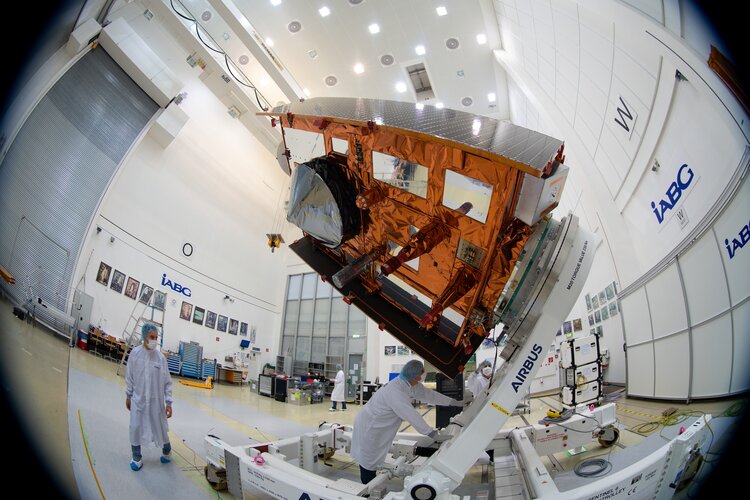
Like students all over the world currently awaiting exam grades, the Copernicus Sentinel-6 Michael Freilich satellite has also been put through a series of strenuous tests leaving the eyes of the teams involved in this international mission set firmly on its final results. Happily, Sentinel-6 has passed with flying colours and engineers can now prepare it for shipment to the US for liftoff on a SpaceX Falcon-9, which is scheduled for 10 November.
BlackSky Awarded Monitoring Contract From U.S. Air Force to Track Global COVID-19 Impact on Military Readiness
21.7.2020 15:58 GISCafe.com Webcasts-Webinars U.S. Air Force to utilize BlackSky’s artificial intelligence and machine learning analytics platform to maintain force readiness and secure the …Stantec awarded bridge inspection contracts across three US states
21.7.2020 15:58 GISCafe.com Webcasts-Webinars EDMONTON, Alberta and NEW YORK and DENVER, July 21, 2020 (GLOBE NEWSWIRE) -- TSX, NYSE:STN - Stantec has been selected to provide bridge inspection …Online directory points way to national map, land registration and cadastral data from official sources
21.7.2020 15:58 GISCafe.com Webcasts-Webinars National Mapping, Cadastral and Land Registry Authorities (NMCAs) have launched an online directory to help users find official …Online directory points way to national map, land registration and cadastral data from official sources
21.7.2020 15:58 GISCafe.com Webcasts-Webinars July 21, 2020 -- National Mapping, Cadastral and Land Registry Authorities (NMCAs) have launched an online directory to help …SWUAT Technologies Selects Draganfly’s Vital Intelligence Technology to Combat the Spread of COVID-19
21.7.2020 15:58 GISCafe.com Webcasts-Webinars Draganfly’s platform to be used in improving the usage of unmanned systems by first responders in handling pandemic situations Los …Velodyne Lidar Inc. Announces Patent License Agreement With Hesai Photonics Technology
21.7.2020 15:58 GISCafe.com Webcasts-Webinars License Agreement Reaffirms Velodyne’s Pioneering Patent on Surround View LidarSAN JOSE, Calif. — (BUSINESS WIRE) — July 21, 2020 …
Drones Flying High at Pitsco
21.7.2020 15:58 GISCafe.com Webcasts-Webinars Pitsco Education introduces middle school curriculum and arena for dronesPITTSBURG, Kan., July 21, 2020 — (PRNewswire) — The …
FARO® Releases First Fully Integrated High-Accuracy Indoor Mobile Laser Scanner: Focus Swift
21.7.2020 15:58 GISCafe.com Webcasts-Webinars LAKE MARY, Fla., July 21, 2020 — (PRNewswire) — FARO Technologies, Inc. (NASDAQ: FARO), the global leader for 3D measurement, …Vrchní referent/rada v oddělení aktualizace PI KN č.1 na Katastrálním pracovišti Brno - venkov
21.7.2020 15:32 ČÚZK - předpisy a opatření Katastrální úřad pro Jihomoravský kraj Katastrální pracoviště Brno-venkovvypisuje výběrové řízení na místo
Vrchní referent/rada v oddělení aktualizace PI KN č.1 na Katastrálním pracovišti Brno - venkov
Vrchní referent/rada v oddělení aktualizace PI KN č.1 na Katastrálním pracovišti Brno - venkov
21.7.2020 15:32 ČÚZK /Urady/Katastralni-urady/Katastralni-urady/Katastralni-urad-pro-Jihomoravsky-kraj/Volna-mista/DMS/Vrchni-referent-rada-v-oddeleni-aktualizace-PI-KNVrchní referent/rada v oddělení aktualizace PI KN č.1 na Katastrálním pracovišti Brno - venkov
21.7.2020 15:32 ČÚZK - volná místa Katastrální úřad pro Jihomoravský kraj Katastrální pracoviště Brno-venkov vypisuje výběrové řízení na místo Vrchní referent/rada v oddělení aktualizace PI KN č.1 na Katastrálním pracovišti Brno - venkovrada / odborný rada v oddělení dokumentace KN
21.7.2020 14:24 ČÚZK - předpisy a opatření Katastrální úřad pro Liberecký kraj - Katastrální pracoviště Semilyvypisuje výběrové řízení na místo
rada / odborný rada v oddělení dokumentace KN
rada / odborný rada v oddělení dokumentace KN
21.7.2020 14:24 ČÚZK /Urady/Katastralni-urady/Katastralni-urady/Katastralni-urad-pro-Liberecky-kraj/Uredni-deska/Oznameni-a-jina-uredni-sdeleni/Volna-mista/rada-odborny-rada-v-oddeleni-dokumentace-KNrada / odborný rada v oddělení dokumentace KN
21.7.2020 14:24 ČÚZK - volná místa Katastrální úřad pro Liberecký kraj - Katastrální pracoviště Semily vypisuje výběrové řízení na místo rada / odborný rada v oddělení dokumentace KNVyhlášení platnosti v části k.ú. Černousy
21.7.2020 13:12 ČÚZK /Urady/Katastralni-urady/Katastralni-urady/Katastralni-urad-pro-Liberecky-kraj/Katastralni-pracoviste/KP-Frydlant/O-uradu/Aktuality/Vyhlaseni-platnosti-v-casti-k-u-CernousyVyhlášení platnosti v části k.ú. Černousy
21.7.2020 13:12 ČÚZK - předpisy a opatření Katastrální úřad pro Liberecký kraj - Katastrální pracoviště Frýdlant zveřejnil novou aktualitu: Oznamujeme, že ke dni 17.7.2020 byla vyhlášena platnost obnoveného katastrálního operátu na podkladě výsledků pozemkových úprav v části kat. území Černousy,sp. zn. PUP-2/2015-532.
Konference GIS Esri v ČR bude letos virtuální
21.7.2020 12:50 GISportal.cz
S ohledem na možnost, že se v době konání konference mohou vrátit aktivní opatření proti šíření COVID-19, rozhodla se společnost ARCDATA PRAHA, že letošní konferenci uspořádá virtuální formou. Rozhodnutí o přesunu konference do online prostředí blíže vysvětluje ředitel společnosti v dopise. Více informací, včetně možností zapojení do programu, či registračních poplatků (pedagogičtí pracovníci a studenti […]
The post Konference GIS Esri v ČR bude letos virtuální appeared first on GISportal.cz.
Konference GIS Esri v ČR bude letos virtuální
21.7.2020 10:28 ARCDATAS ohledem na možnost, že se v době konání konference mohou vrátit aktivní opatření proti šíření COVID-19, jsme se rozhodli letošní konferenci uspořádat virtuální formou.
Určitě věříte, že naše rozhodování nebylo vůbec jednoduché. Konference GIS Esri v ČR, to totiž není jen příležitost vyslechnout si zajímavé řečníky a získat informace o aktuálním dění v oblasti GIS. Je především místem, kde se můžeme setkávat s lidmi z oboru, s kolegy, s přáteli. Tento krok jsme proto pečlivě promýšleli a hledali způsob, jak do digitálního prostředí přenést všechny nejdůležitější části programu našich konferencí.
I letos se tedy můžete těšit na:
- úvodní a technologickou sekci,
- tematické bloky veřejná správa a správa inženýrských sítí,
- technologické workshopy
- a samozřejmě i přednášky uživatelů a partnerů.
Další informace
Veškeré informace o programu a rozsahu konference, důležitých termínech, stejně jako kontakty na organizační tým naleznete na webových stránkách akce.
Airbus signs contract with UK Ministry of Defence for Skynet 6A satellite
21.7.2020 0:28 GISCafe.com Webcasts-Webinars Stevenage 19 July 2020 – Airbus Defence and Space has signed a contract with the UK Ministry of Defence (MOD) to extend and enhance the Skynet …Český historický atlas získal Cenu Akademie věd ČR [Katedra aplikované geoinformatiky a kartografie, byTopic]
20.7.2020 17:35 Katedra aplikované geoinformatiky a kartografie Přf UK "Český historický atlas. Kapitoly z dějin 20.století", na kterém se podíleli rovněž RNDr. Dana Fialová, Ph.D., RNDr. Zdeněk Kučera, Ph.D. a RNDr. Tomáš Burda, Ph.D. z katedry socíální geografie a regionálního rozvoje a doc. RNDr. Přemysl Štych, Ph.D. a Bc. Daniel Paluba z katedry aplikované geoinformatiky a kartografie, získal cenu Akademie věd České republiky za mimořádný výsledek výzkumu, experimentálního vývoje a inovací. Gratulujeme!Český historický atlas získal Cenu Akademie věd ČR [Katedra aplikované geoinformatiky a kartografie, byTopic]
20.7.2020 17:35 Katedra aplikované geoinformatiky a kartografie Přf UK "Český historický atlas. Kapitoly z dějin 20.století", na kterém se podíleli rovněž doc. RNDr. Přemysl Štych, Ph.D., RNDr. Tomáš Burda, Ph.D. a Bc. Daniel Paluba z katedry aplikované geoinformatiky a kartografie a RNDr. Dana Fialová, Ph.D. a RNDr. Zdeněk Kučera, Ph.D. z katedry sociální geografie a regionálního rozvoje, získal cenu Akademie věd České republiky za mimořádný výsledek výzkumu, experimentálního vývoje a inovací. Gratulujeme!Průvodce Esri User Conference 2020
20.7.2020 16:33 ARCDATALetošní ročník Esri UC se vzhledem k celosvětové pandemii COVID-19 konal virtuálně, díky čemuž se k jejímu sledování mohlo přihlásit více než 86 000 účastníků z celého světa. Do online prostředí se přitom podařilo přenést většinu tradičního konferenčního obsahu a pro účastníky tak byla připravena třídílná plenary sekce, setkání s inspirativními hosty, technologické sekce s workshopy, virtuální výstava Map Gallery a dokonce zde byl i samostatný prostor pro networking.
Plenary Session
První den konference zahájil prezident Esri, Jack Dangermond, který prezentoval svoji vizionářskou představu týkající se budoucího směřování společnosti s přihlédnutím na sociální a environmentální problémy světa. Poté nastínil technologické novinky v softwaru ArcGIS a přiblížil práci uživatelů. Zde byla Česká republika zastoupena ukázkou urbanistické vizualizace od Magistrátu města Brna.
Jack Dangermond nezapomněl ani na každoročně udílené ceny Special Achievement in GIS, z nichž jedna opět putovala i do Česka – za projekt vytvoření a koordinace tísňových linek bylo letos oceněno Generální ředitelství Hasičského záchranného sboru ČR.
Druhý den se pak již nesl ve znamení technologií a specialisté Esri se s účastníky podělili o nejzajímavější novinky ArcGIS. Ve středeční části přivítal Jack Dangermond dva hosty – Vicky Philips z National Geographic Society a Jeffryho Sachse z Colombia University. Hovořili spolu o tématech globální udržitelnosti, podpory vzdělávání a významu vědecké práce.
Videozáznamy z Plenary Session mohou na Youtube kanálu Esri zhlédnout i zájemci, kteří se na konferenci nestihli včas zaregistrovat. Zbývající obsah konference je až do konce srpna dostupný pouze předem přihlášeným.
Technologické sekce a workshopy
V rámci konference byla představena celá řada technologických novinek, zbrusu nových aplikací i dílčích vylepšení stávajícího softwaru ArcGIS. To vše bylo obsahem více než 370 workshopů a bezmála 160 oborových tematický sekcí.
Virtuální výstava
Účastníci Esri UC 2020 měli dokonce možnost navštívit i výstavu partnerů a sponzorů konference. Firmy zde v rámci svých virtuálních výstavních stánků prezentovaly svá technologická řešení, případové studie a návštěvníci s nimi mohli i živě diskutovat.
Map Gallery
Významnou součástí konference byla také galerie map a online aplikací, které vytvořili uživatelé ArcGIS z celého světa – i v této sekci jsme díky Mapě s příběhem od Masarykovy univerzity mohli nalézt českou stopu. Dalším českým úspěchem je zařazení do prestižní sbírky Esri Map Book, kde byly publikovány mapové aplikace ČGS.
Networking
Konferenční prostředí účastníkům umožňovalo také networking, tedy navázání profesních vztahů včetně a možnosti diskuze, která by jinak ve virtuálním prostoru nebyla možná.
Letošní, trochu netradiční a zároveň inovativní, pojetí Esri UC 2020 jsme si užili a již nyní jsme zvědaví, jak bude vypadat příští ročník konference. Po letošním úspěchu se totiž nechá očekávat, že její virtuální podoba bude nějakým způsobem zachována, i pokud se bude konference opět konat na svém tradičním místě v San Diegu.
Maxar Renews Four Multi-Million Dollar International Defense and Intelligence Contracts
20.7.2020 16:16 GISCafe.com Webcasts-Webinars Fifth International Defense and Intelligence Contract Expanded for Greater Access to Maxar’s Industry-Leading ConstellationWESTMINSTER, Colo. …
odborný / vrchní referent – informatik v oddělení právních vztahů
20.7.2020 14:40 ČÚZK /Urady/Katastralni-urady/Katastralni-urady/Katastralni-urad-pro-Liberecky-kraj/Uredni-deska/Oznameni-a-jina-uredni-sdeleni/Volna-mista/odborny-vrchni-referent-–-informatik-v-oddeleniodborný / vrchní referent – informatik v oddělení právních vztahů
20.7.2020 14:40 ČÚZK - volná místa Katastrální úřad pro Liberecký kraj - Katastrální pracoviště Jablonec nad Nisou vypisuje výběrové řízení na místo odborný / vrchní referent – informatik v oddělení právních vztahůodborný / vrchní referent – informatik v oddělení právních vztahů
20.7.2020 14:40 ČÚZK - předpisy a opatření Katastrální úřad pro Liberecký kraj - Katastrální pracoviště Jablonec nad Nisouvypisuje výběrové řízení na místo
odborný / vrchní referent – informatik v oddělení právních vztahů
GIDAS: Real-time interference detection making satnav safer
20.7.2020 10:40 ESA Navigation
A new monitoring system developed through an ESA-backed project works like a ‘bodyguard’ for satellite navigation in use at strategic or safety-critical sites. Known as GIDAS, the scalable system immediately detects, identifies and pinpoints satnav interference sources in its vicinity.
20200720 Vrchní referent / rada oddělení aktualizace PI KN II.
20.7.2020 10:22 ČÚZK - předpisy a opatření Katastrální úřad pro Středočeský kraj - Katastrální pracoviště Praha-západ Vyhlášení výběrového řízení: Vrchní referent / rada oddělení aktualizace PI KN II. V části "Úřední deska", v sekci "Oznámení a jiná úřední sdělení" bylo vystaveno "Oznámení o vyhlášení výběrového řízení na obsazení služebního místa Vrchní referent / rada oddělení aktualizace PI KN II. "20200720 Vrchní referent / rada oddělení aktualizace PI KN II.
20.7.2020 10:22 ČÚZK /Urady/Katastralni-urady/Katastralni-urady/Katastralni-urad-pro-Stredocesky-kraj/Katastralni-pracoviste/KP-Praha-zapad/O-uradu/Aktuality/20200526-Rada-odborny-rada-oddeleni-pravnich-v-(2)Nedostupnost WSDP na zkoušku v pondělí 20.7.2020 od 17:00 do cca 17:30
20.7.2020 10:21 Dálkový přístup k údajům KN ČR Vážení uživatelé webových služeb,oznamujeme, že v pondělí 20.7.2020 od 17 do cca 17:30 hodin nebudou dostupné webové služby na zkoušku.
Omlouváme se za komplikace a děkujeme za pochopení.
Nedostupnost WSDP na zkoušku v pondělí 20.7.2020 od 17:00 do cca 17:30
20.7.2020 10:21 ČÚZK /Aplikace-DP-do-KN/Aplikace-DP-do-KN/Archiv-DP/295103Nedostupnost WSDP na zkoušku v pondělí 20.7.2020 od 17:00 do cca 17:30
20.7.2020 10:21 ČÚZK - předpisy a opatření Vážení uživatelé webových služeb,oznamujeme, že v pondělí 20.7.2020 od 17 do cca 17:30 hodin nebudou dostupné webové služby na zkoušku.
Omlouváme se za komplikace a děkujeme za pochopení.



